Pointer Defect Detection Based on Transfer Learning and Improved Cascade-RCNN
Abstract
1. Introduction
2. Theories and Methods
2.1. Overview of Cascade-RCNN
2.2. Basic Network ResNet-50 Reconstructed by Deformable Convolution
2.3. OHEM Integrated into the Detection Network
2.4. Transfer Learning
3. TICNET: Proposed Pointer Defect Detection Algorithm
3.1. Network Structure
3.2. Loss Function
4. Results and Discussion
4.1. Preparatory Work
4.2. Detection Results
4.3. Ablation Study
4.3.1. Ablation Study for TICNET
- Scheme 1: The proposed algorithm does not use deformable convolution to improve the basic network and still uses conventional convolution to build ResNet-50.
- Scheme 2: The proposed algorithm does not use online hard example mining, and the detection network still uses Stages 1–3 of Cascade-RCNN.
- Scheme 3: Secondary transfer learning is abandoned. The pre-trained weights of ImageNet are used to train the TICNET, instead of using the model that can recognize common pointer surface defects as the pre-trained model.
- Scheme 4: The complete model of TICNET is used.
4.3.2. Ablation Study for Transfer Learning
4.4. Comparison of Different Detection Algorithms
5. Conclusions
Author Contributions
Funding
Acknowledgments
Conflicts of Interest
References
- Li, C.; Zhang, X.; Huang, Y.; Tang, C.; Fatikow, S. A novel algorithm for defect extraction and classification of mobile phone screen based on machine vision. Comput. Ind. Eng. 2020, 146, 106530. [Google Scholar] [CrossRef]
- Zhang, X.; Wei, L.; Yuan, W.; Ding, Z. Research on micro-crack detection method of plate heat exchanger based on machine vision. J. Electr. Eng. 2020, 37, 856–860. [Google Scholar]
- Yang, M. Automatic verification method of car tire temperature and pressure meter reading based on machine vision. Autom. Instrum. 2020, 6, 44–47. [Google Scholar]
- Deshpande, A.M.; Telikicherla, A.K.; Jakkali, V.; Wickelhaus, D.A.; Kumar, M.; Anand, S. Computer vision toolkit for non-invasive monitoring of factory floor artifacts. Procedia Manuf. 2020, 48, 1020–1028. [Google Scholar] [CrossRef]
- Pierleoni, P.; Belli, A.; Palma, L.; Sabbatini, L. A versatile machine vision algorithm for real-time counting manually assembled pieces. J. Imaging 2020, 6, 48. [Google Scholar] [CrossRef]
- Lins, R.G.; De Araujo, P.R.M.; Corazzim, M. In-process machine vision monitoring of tool wear for cyber-physical production systems. Robot. Comput. Manuf. 2020, 61, 101859. [Google Scholar] [CrossRef]
- Le, N.T.; Wang, J.W.; Wang, C.C.; Nguyen, T.N. Automatic defect inspection for coated eyeglass based on symmetrized energy analysis of color channels. Symmetry 2019, 11, 1518. [Google Scholar] [CrossRef]
- Zeiler, A.; Steinboeck, A.; Vincze, M.; Jochum, M.; Kugi, A. Vision-based inspection and segmentation of trimmed steel edges. IFAC-PapersOnLine 2019, 52, 165–170. [Google Scholar] [CrossRef]
- Anonymous. Machine vision system detects stretched chain links on moving conveyor drives. Vision Syst. Des. 2019, 24, 450–453. [Google Scholar]
- Li, X.; Qiao, T.; Pang, Y.; Zhang, H.; Yan, G. A new machine vision real-time detection system for liquid impurities based on dynamic morphological characteristic analysis and machine learning. Measurement 2018, 124, 130–137. [Google Scholar] [CrossRef]
- Zareiforoush, H.; Minaei, S.; Alizadeh, M.R.; Banakar, A. A hybrid intelligent approach based on computer vision and fuzzy logic for quality measurement of milled rice. Measurement 2015, 66, 26–34. [Google Scholar] [CrossRef]
- Xiong, C.; Ji, J. Detection method for welding defects of ship plate joints based on machine vision. Ship Sci. Technol. 2020, 42, 220–222. [Google Scholar]
- Malik, A.A.; Andersen, M.V.; Bilberg, A. Advances in machine vision for flexible feeding of assembly parts. Procedia Manuf. 2019, 38, 1228–1235. [Google Scholar] [CrossRef]
- Liu, R.; Wang, Z.; Liu, X.; Lu, W. Defect detection of automotive precision parts based on machine vision. Software 2020, 41, 192–196. [Google Scholar]
- Li, K. Surface Defect Detection of Automotive Turbine Shell Parts Based on Machine Vision. Master’s Thesis, Nanjing University of Aeronautics and Astronautics, Nanjing, China, 2019. [Google Scholar]
- Zhang, J.; Liang, D.; Liang, D.; Wang, Z. A method for defect detection of automotive injection thread parts based on machine vision. Mach. Manuf. 2019, 57, 76–79. [Google Scholar]
- Meng, F.; Ren, J.; Wang, Q.; Zhang, T. Rubber hose surface defect detection system based on machine vision. IOP Conf. Series Earth Environ. Sci. 2018, 108, 22057. [Google Scholar] [CrossRef]
- Tandiya, A.; Akthar, S.; Moussa, M.; Tarray, C. Automotive Semi-specular Surface Defect Detection System. In Proceedings of the 15th Conference on Computer and Robot Vision (CRV), Toronto, ON, Canada, 9–11 May 2018. [Google Scholar]
- Du, W.; Shen, H.; Fu, J.; Zhang, G.; He, Q. Approaches for improvement of the X-ray image defect detection of automobile casting aluminum parts based on deep learning. NDT E Int. 2019, 107, 102144. [Google Scholar] [CrossRef]
- Zhao, H.; Zhao, Y.; Qi, X.; Li, F. Research on detection algorithm of automotive hub surface defects based on deep learning. Int. J. Mach. Tools Manuf. 2019, 11, 112–115. [Google Scholar]
- Zhang, X.; Liu, G.; Tong, Z.; Hu, P.; Shen, G.; Wang, C.; Zhu, X. Defect prediction of automobile stamping parts based on deep learning. In Proceedings of the 14th China CAE Engineering Analysis Technology Annual Conference, Yinchuan, China, 9–11 August 2018. [Google Scholar]
- Wu, Y.; Guo, D.; Liu, H.; Huang, Y. An end-to-end learning method for industrial defect detection. Assem. Autom. 2019, 40, 31–39. [Google Scholar] [CrossRef]
- Qu, Z.; Shen, J.; Li, R.; Liu, J.; Guan, Q. PartsNet: A unified deep network for automotive engine precision parts defect detection 2018. arXiv 2018, arXiv:1810.12061. [Google Scholar]
- Li, Y.; Chen, Y.; Wang, N.; Zhang, Z.X. Scale-Aware Trident Networks for Object Detection. In Proceedings of the 2019 IEEE/CVF International Conference on Computer Vision (ICCV), Seoul, Korea, 29 October–1 November 2019. [Google Scholar]
- Tian, Z.; Shen, C.; Chen, H.; He, T. FCOS: Fully Convolutional One-Stage Object Detection. In Proceedings of the 2019 IEEE/CVF International Conference on Computer Vision (ICCV), Seoul, Korea, 29 October–1 November 2019. [Google Scholar]
- Morera, Á.; Sánchez, Á.; Moreno, A.B.; Sappa, Á.; Vélez, J. SSD vs. YOLO for detection of outdoor urban advertising panels under multiple variabilities. Sensors 2020, 20, 4587. [Google Scholar] [CrossRef] [PubMed]
- Du, L.; Zhang, R.; Wang, X. Overview of two-stage object detection algorithms. J. Phys. Conf. Ser. 2020, 1544, 12033. [Google Scholar] [CrossRef]
- Cai, Z.; Vasconcelos, N. Cascade R-CNN: Delving into High Quality Object Detection. In Proceedings of the 2018 IEEE/CVF Conference on Computer Vision and Pattern Recognition (CVPR), Salt Lake City, UT, USA, 18–22 June 2018. [Google Scholar]
- Qin, H.; Yan, J.; Li, X.; Hu, X. Joint Training of Cascaded CNN for Face Detection. In Proceedings of the 2016 IEEE Conference on Computer Vision and Pattern Recognition (CVPR), Las Vegas, NV, USA, 27–30 June 2016. [Google Scholar]
- Xu, Z.; Xu, X.; Wang, L.; Yang, R.; Pu, F. Deformable ConvNet with aspect ratio constrained NMS for object detection in remote sensing imagery. Remote Sens. 2017, 9, 1312. [Google Scholar] [CrossRef]
- Zhu, X.; Hu, H.; Lin, S.; Dai, J. Deformable ConvNets v2: More deformable, better results. arXiv 2018, arXiv:1811.11168. [Google Scholar]
- Dai, J.; Qi, H.; Xiong, Y.; Li, Y.; Zhang, G.; Hu, H.; Wei, Y. Deformable Convolutional Networks. arXiv 2017, arXiv:1703.06211. [Google Scholar]
- Szegedy, C.; Ioffe, S.; Vanhoucke, V. Inception-v4, Inception-ResNet and the impact of residual connections on learning. arXiv 2016, arXiv:1602.07261. [Google Scholar]
- Jung, H.; Choi, M.-K.; Jung, J.; Lee, J.H.; Kwon, S.; Jung, W.Y. ResNet-Based Vehicle Classification and Localization in Traffic Surveillance Systems. In Proceedings of the Computer Vision & Pattern Recognition Workshops, Honolulu, HI, USA, 21–26 July 2017. [Google Scholar]
- Wen, L.; Li, X.; Gao, L. A transfer convolutional neural network for fault diagnosis based on ResNet-50. Neural Comput. Appl. 2019, 32, 6111–6124. [Google Scholar] [CrossRef]
- Chu, J.; Guo, Z.; Leng, L. Object detection based on multi-layer convolution feature fusion and online hard example mining. IEEE Access 2018, 6, 19959–19967. [Google Scholar] [CrossRef]
- Shrivastava, A.; Gupta, A.; Girshick, R. Training Region-Based Object Detectors with Online Hard Example Mining. In Proceedings of the 2016 IEEE Conference on Computer Vision and Pattern Recognition (CVPR), Las Vegas, NV, USA, 27–30 June 2016. [Google Scholar]
- Qiu, Z.; Zhao, S.; Feng, X.; He, Y. Transfer learning method for plastic pollution evaluation in soil using NIR sensor. Sci. Total Environ. 2020, 740, 140118. [Google Scholar] [CrossRef]
- Yosinski, J.; Clune, J.; Bengio, Y.; Lipson, H. How transferable are features in deep neural networks? arXiv 2014, arXiv:1411.1792. [Google Scholar]
- Oquab, M.; Bottou, L.; Laptev, I.; Sivic, J. Learning and Transferring Mid-Level Image Representations using Convolutional Neural Networks. In Proceedings of the 2014 IEEE Conference on Computer Vision and Pattern Recognition, Columbus, OH, USA, 23–28 June 2014. [Google Scholar]
- Glorot, X.; Bordes, A.; Bengio, Y. Domain Adaptation for Large-Scale Sentiment Classification: A Deep Learning Approach. In Proceedings of the 28th International Conference on Machine Learning, Washington, DC, USA, 28 June–2 July 2011. [Google Scholar]
- Chen, M.; Xu, Z.; Weinberger, K.; Sha, F. Marginalized denoising autoencoders for domain adaptation. arXiv 2012, arXiv:1206.4683. [Google Scholar]
- Ganin, Y.; Ustinova, E.; Ajakan, H.; Germain, P.; LaRochelle, H.; LaViolette, F.; Marchand, M.; Lempitsky, V. Domain-adversarial training of neural networks. arXiv 2015, arXiv:1505.07818. [Google Scholar]
- Minaee, S.; Boykov, Y.; Porikli, F.; Plaza, A.; Kehtarnavaz, N.; Terzopoulos, D. Image segmentation using deep learning: A survey. arXiv 2020, arXiv:2001.05566. [Google Scholar]
- Paszke, A.; Gross, S.; Massa, F.; Lerer, A.; Bradbury, J.; Chanan, G.; Killeen, T.; Lin, Z.; Gimelshein, N.; Antiga, L.; et al. PyTorch: An imperative style, high-performance deep learning library. arXiv 2019, arXiv:1912.01703. [Google Scholar]
- Liu, W.; Anguelov, D.; Erhan, D.; Szegedy, C.; Reed, S.; Fu, C.; Berg, A. SSD: Single shot multibox detector. arXiv 2015, arXiv:1512.02325. [Google Scholar]
- Lin, T.Y.; Goyal, P.; Girshick, R.; He, K.; Dollar, P. Focal loss for dense object detection. arXiv 2017, arXiv:1708.02002. [Google Scholar]
- Dai, J.; Li, Y.; He, K.; Sun, J. R-FCN: Object detection via region-based fully convolutional networks. arXiv 2016, arXiv:1605.06409. [Google Scholar]
- Ren, S.; He, K.; Girshick, R.; Sun, J. Faster R-CNN: Towards real-time object detection with region proposal networks. arXiv 2015, arXiv:1506.01497. [Google Scholar] [CrossRef]
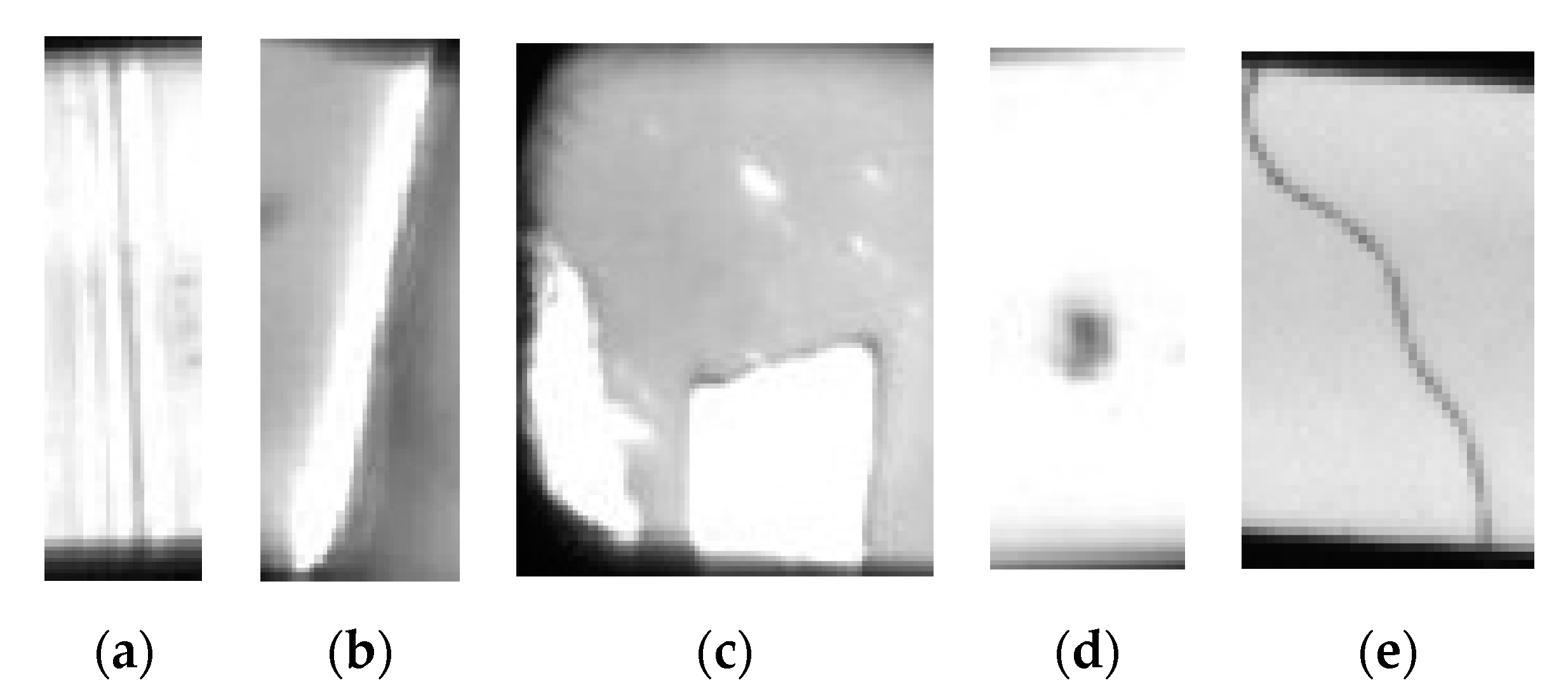
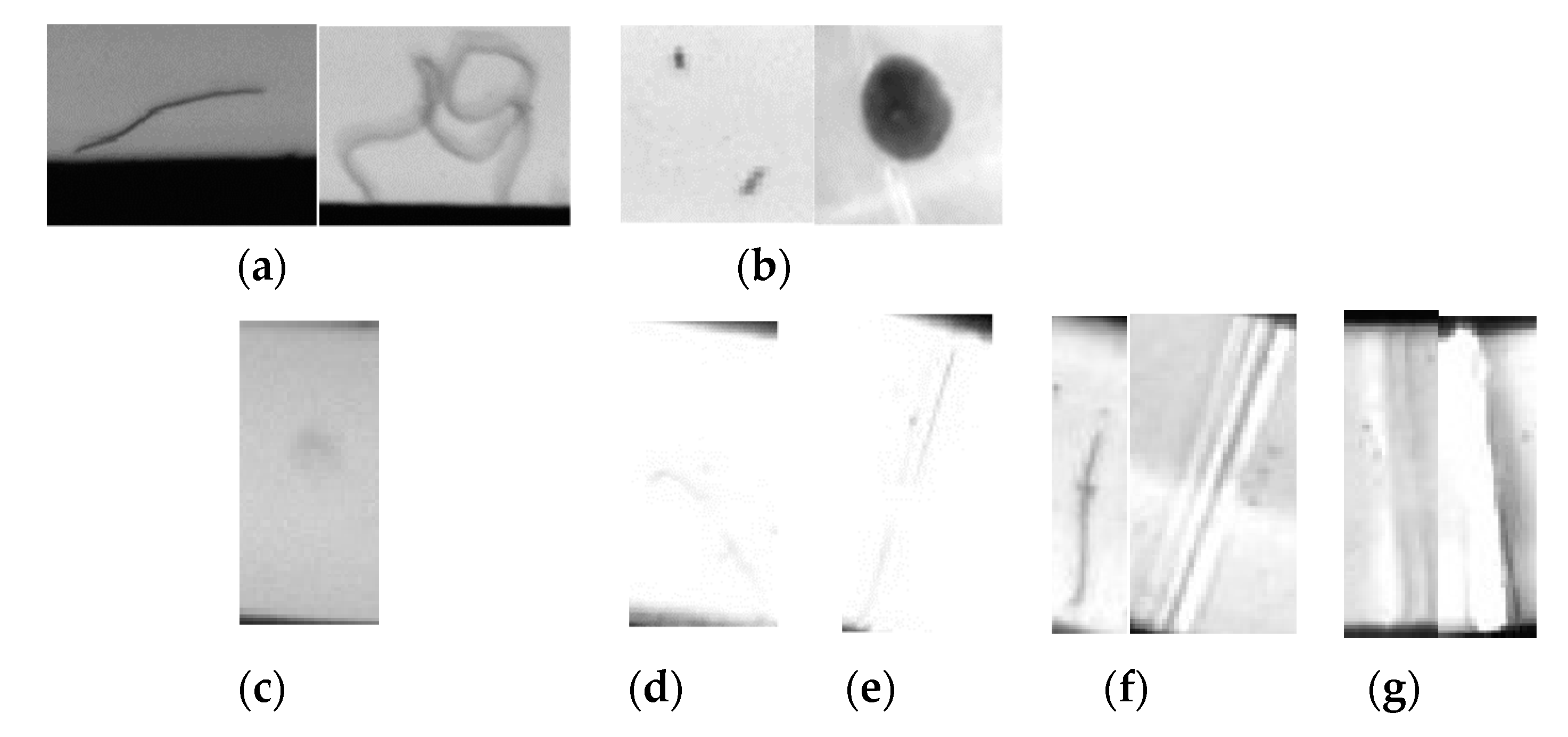
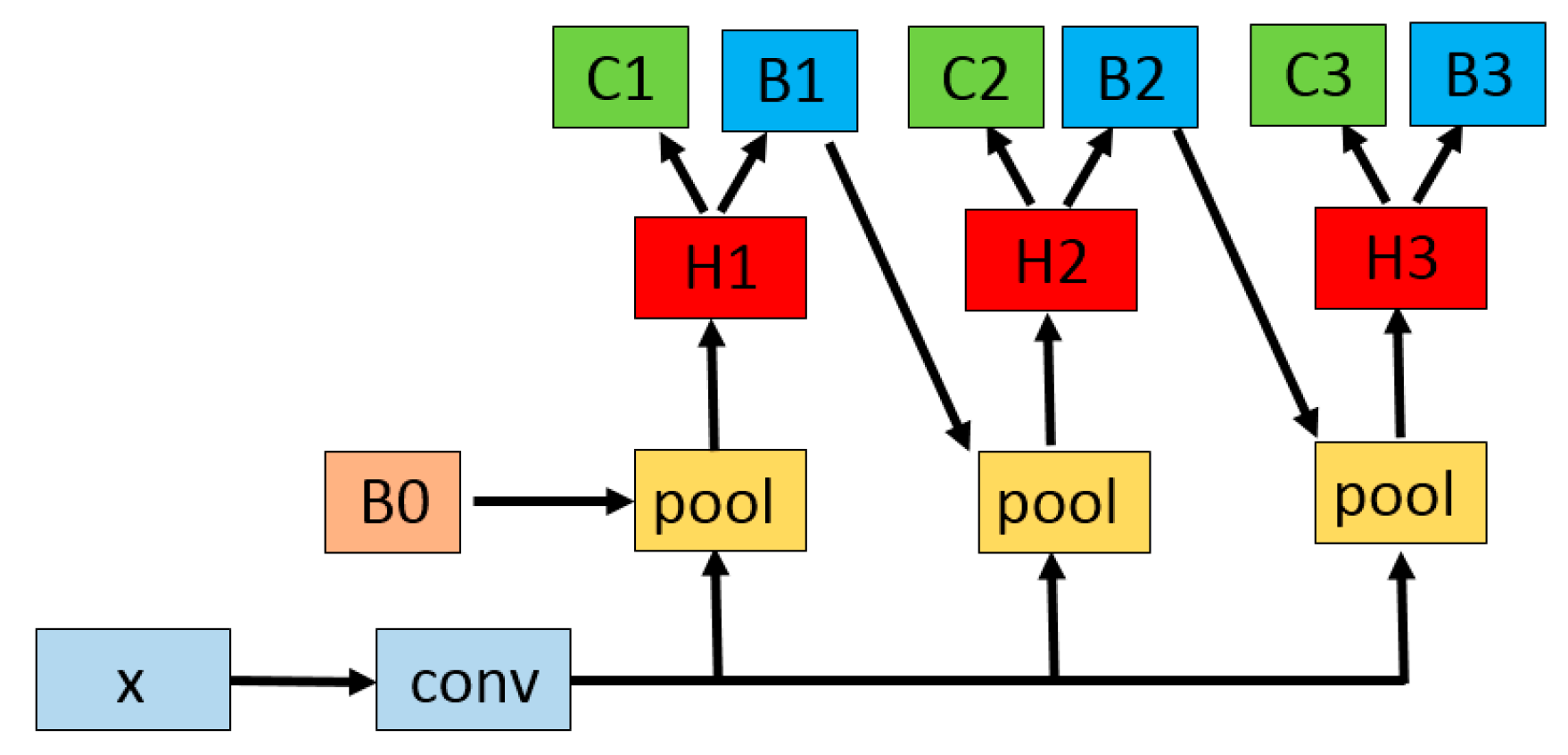
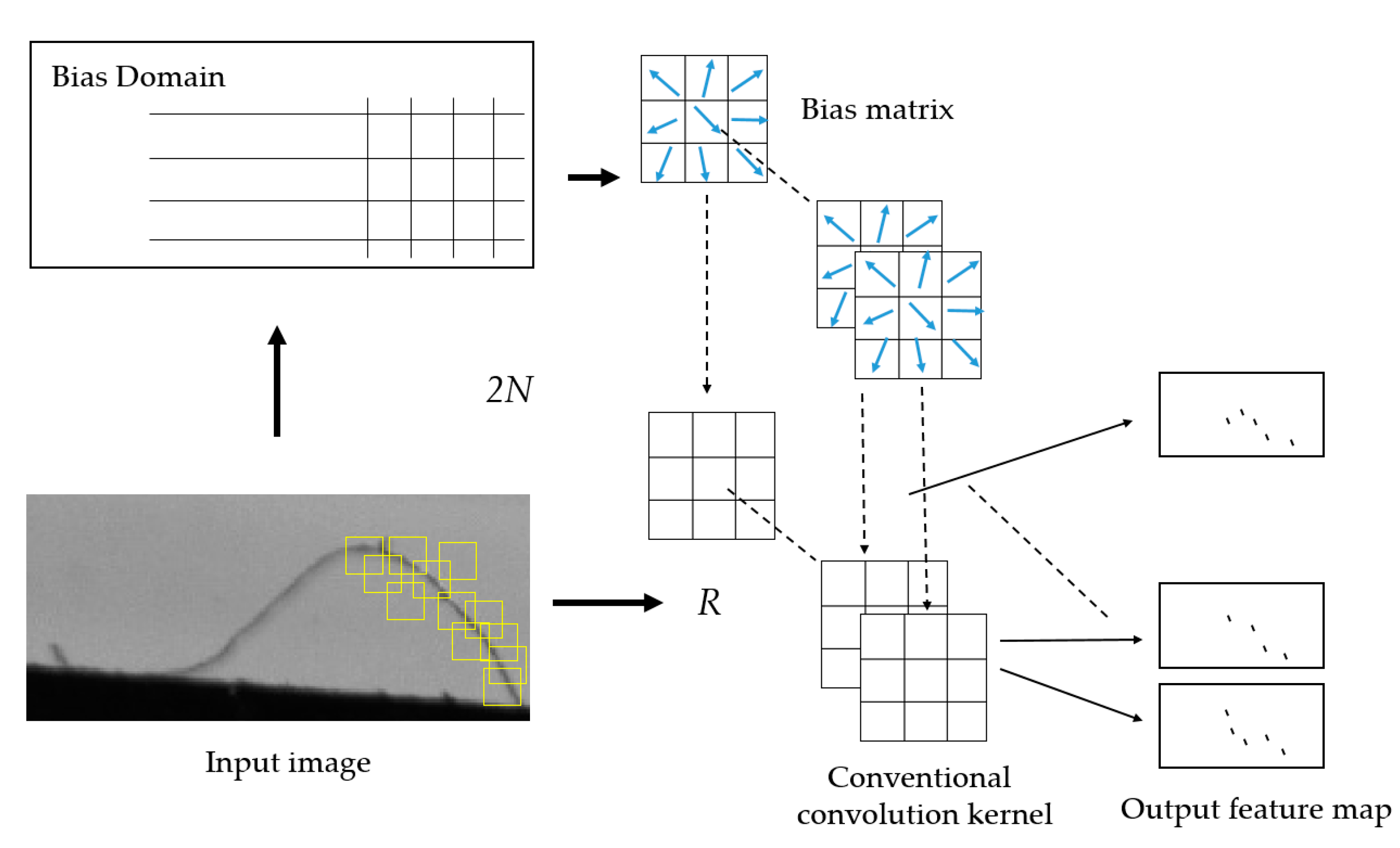
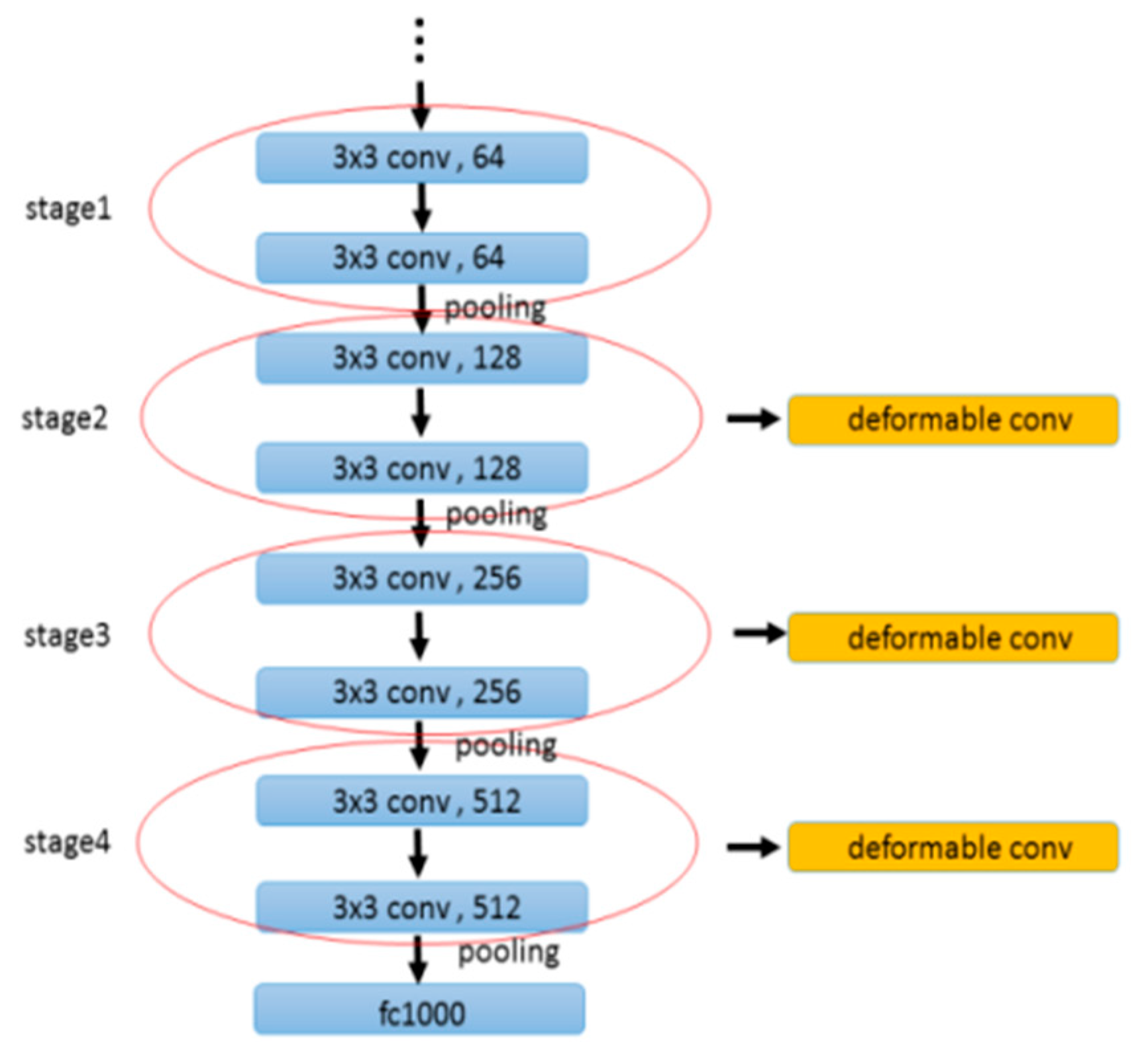
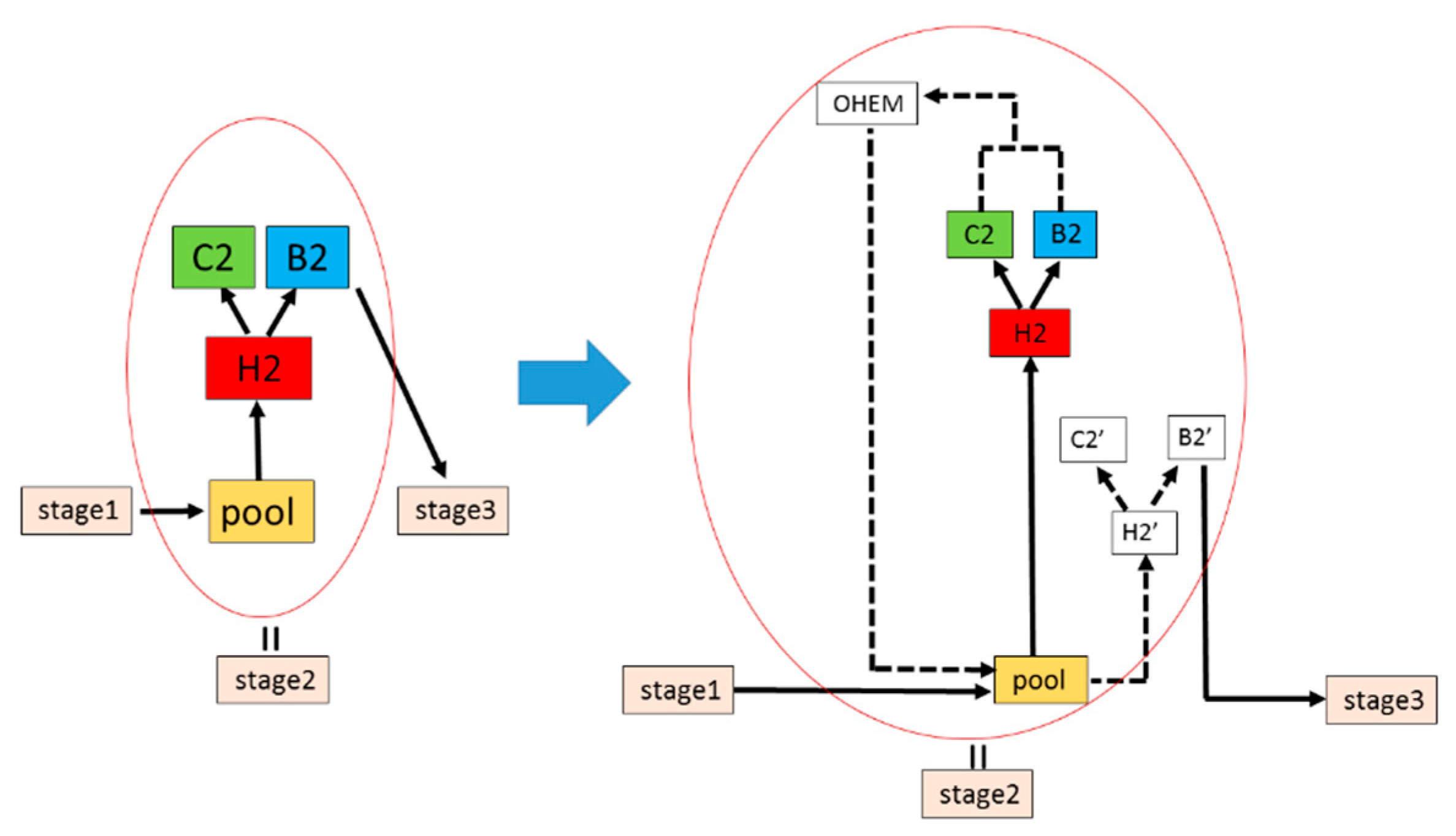



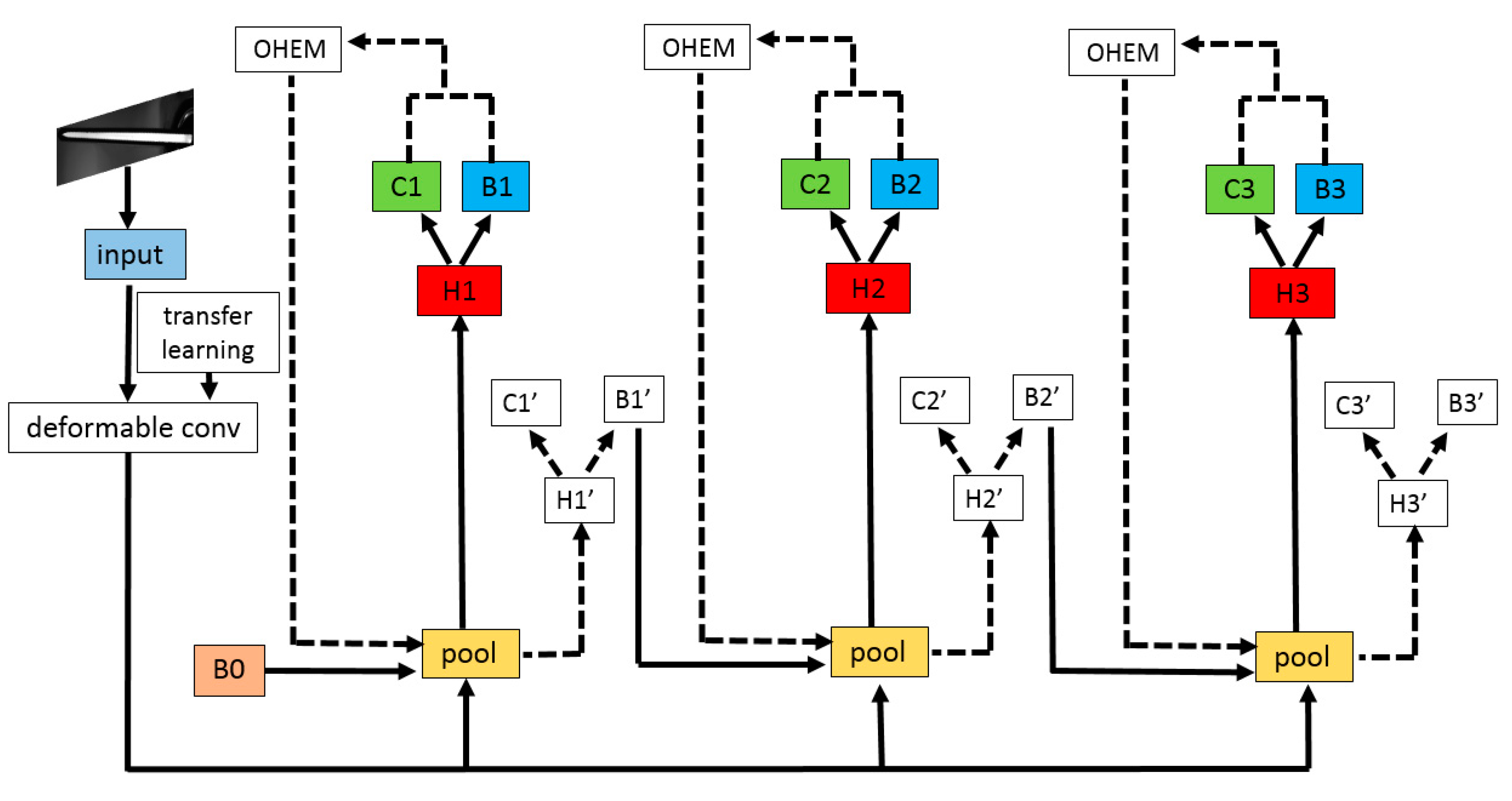
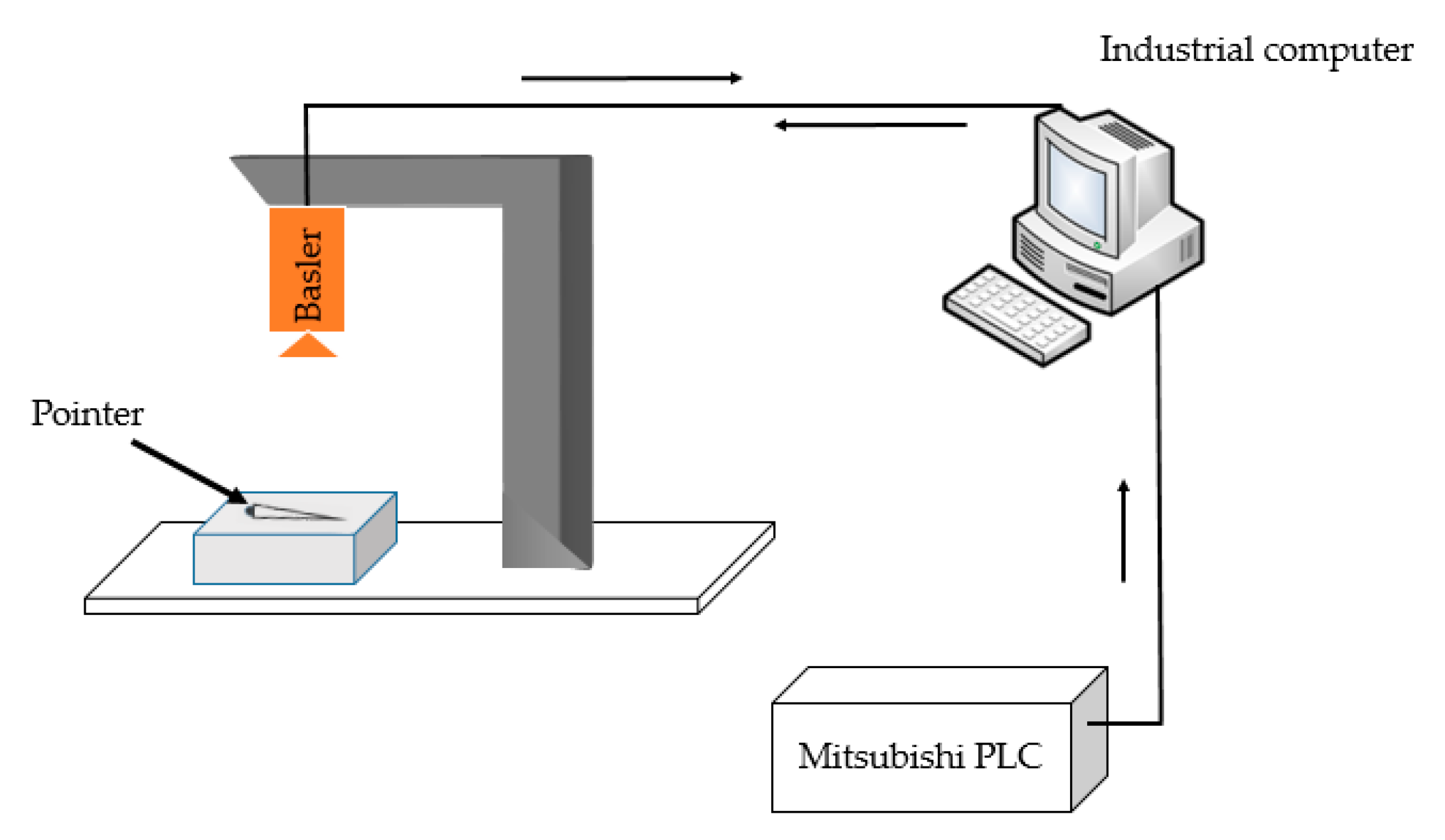
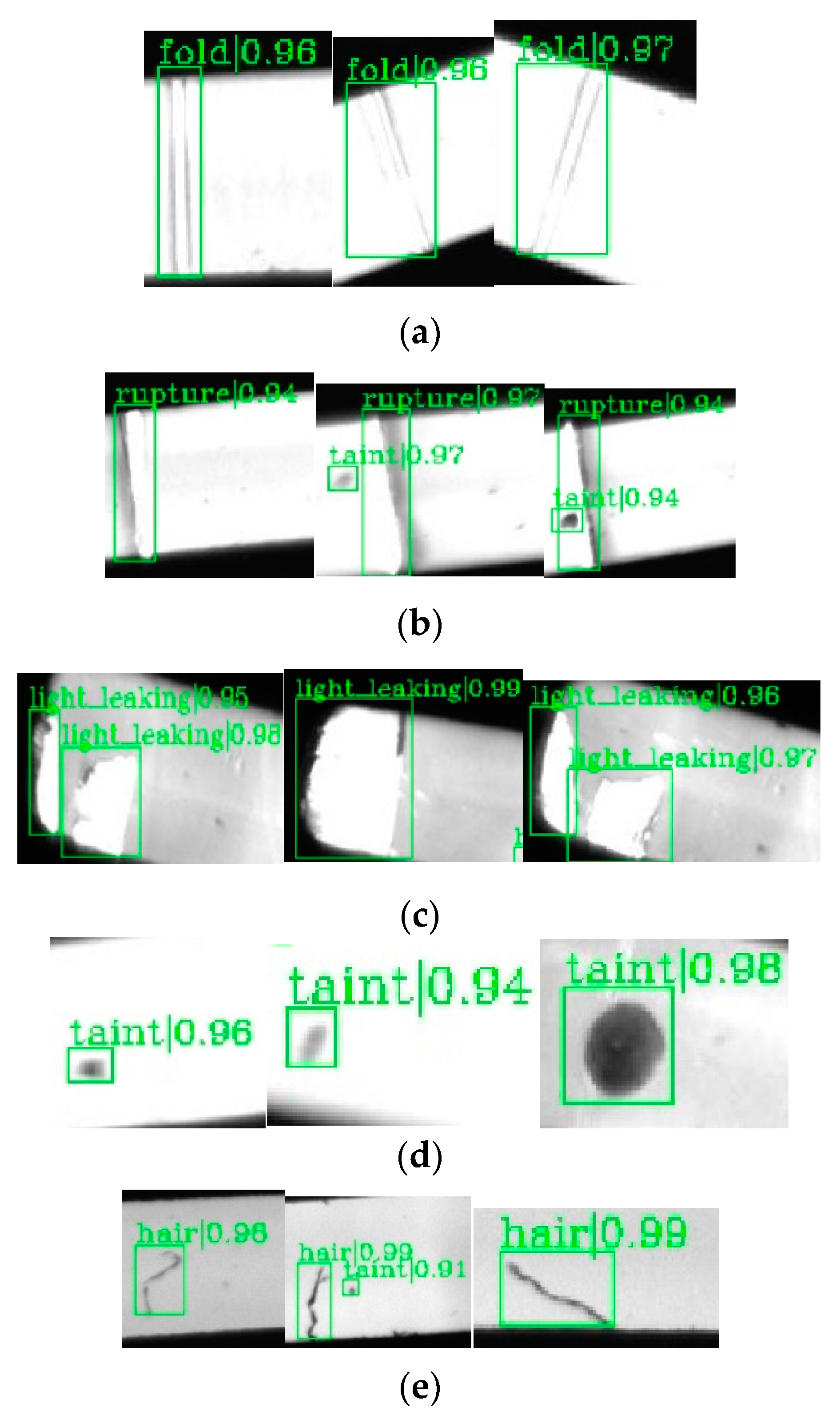
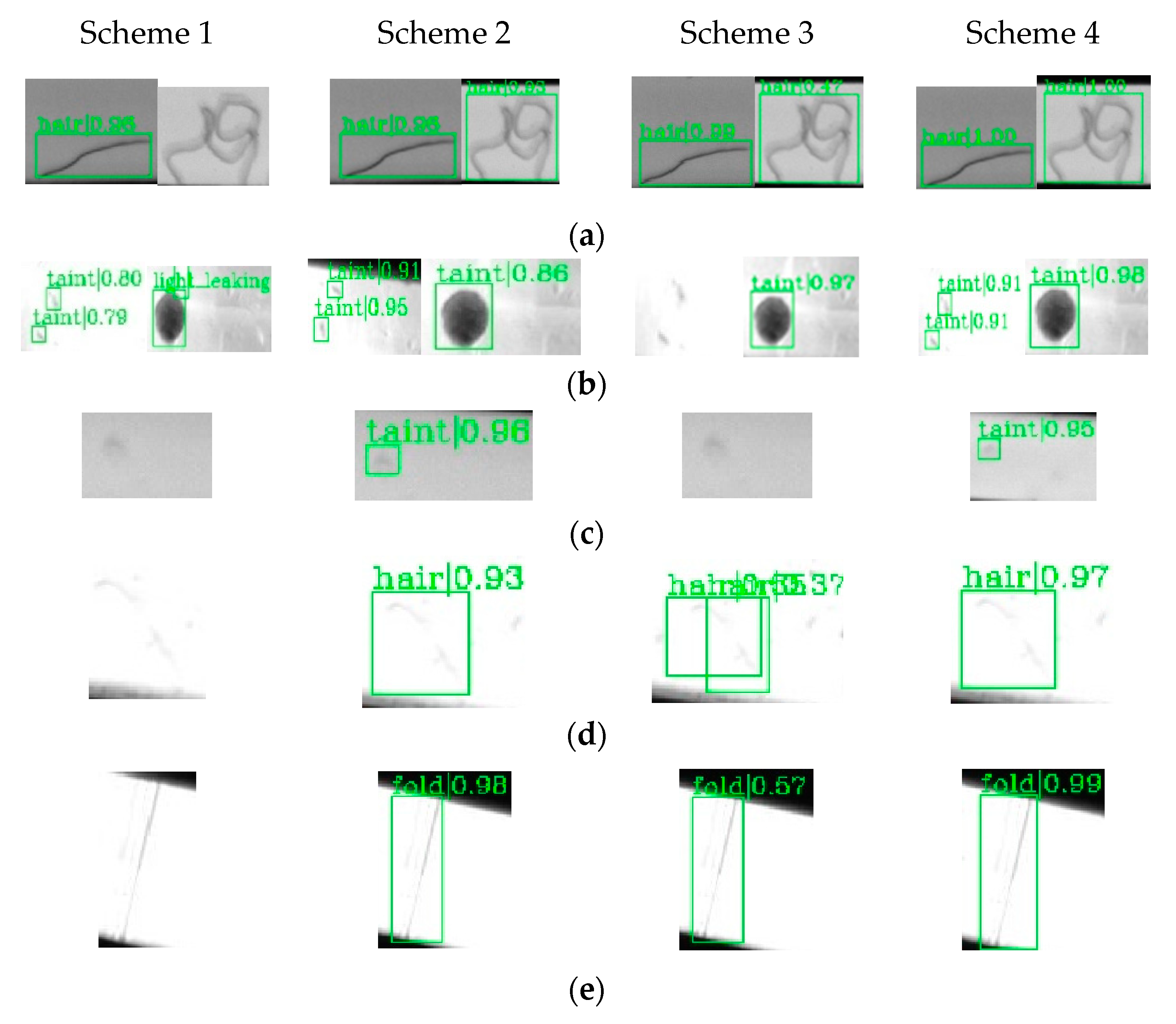
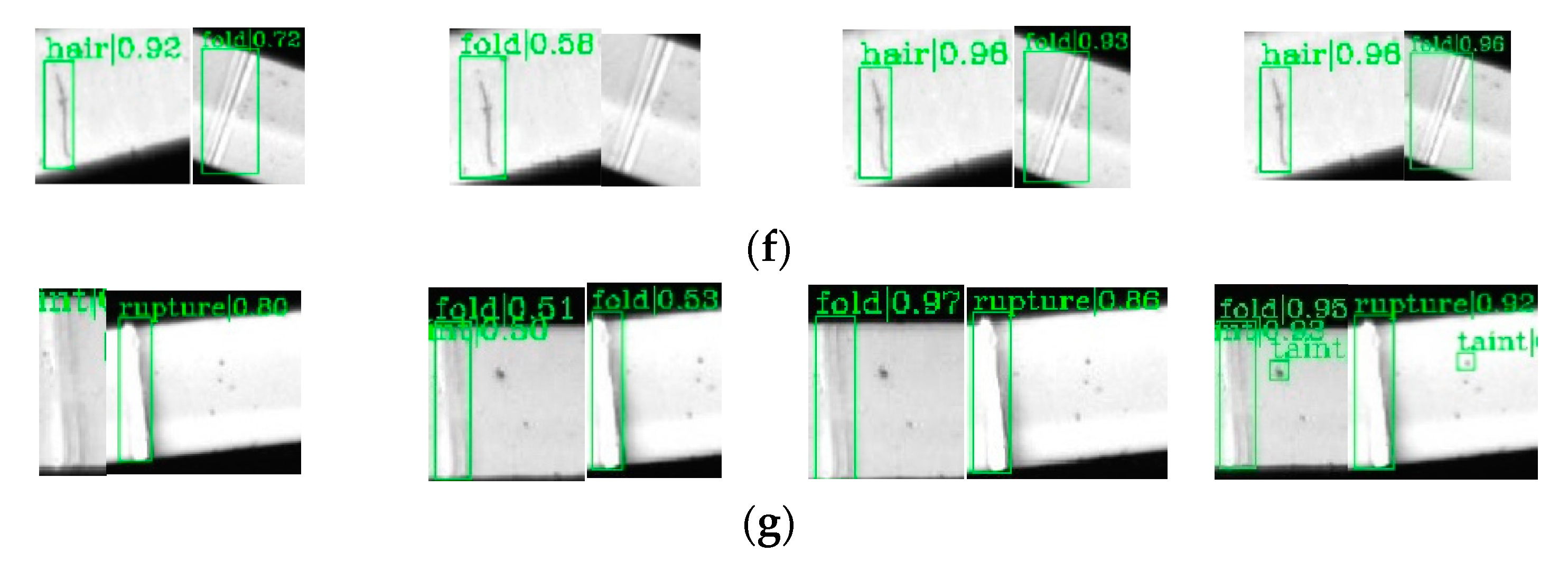
| Name | Parameter |
|---|---|
| Camera | Basler acA5472-5gm, and the resolution is 5472 × 3648 |
| CPU | Intel Core i7-6800 @ 3.4 GHz |
| Memory | 32 GB |
| GPU | Dual-channels NVIDIA GTX1080Ti |
| Operating system | Linux Ubuntu 16.04 |
| Deep Learning Framework | PyTorch 1.3.1 [45] |
| Language | Python 3.7.5 |
| Name of the Defects | AP0.5 1 | AVGConf 2 |
|---|---|---|
| Hot Stamping Paper Folds | 0.864 | 0.969 |
| Hot Stamping Paper Damage | 0.852 | 0.957 |
| Needle Leakage | 0.877 | 0.974 |
| Stains | 0.911 | 0.971 |
| Hair-Like Defects | 0.861 | 0.989 |
| Schemes | mAP0.5 1 | mAP0.7 2 | ACC 3 | DR 4 |
|---|---|---|---|---|
| Scheme 1 5 | 0.774 | 0.792 | 0.825 | 0.843 |
| Scheme 2 6 | 0.825 | 0.804 | 0.871 | 0.831 |
| Scheme 3 7 | 0.819 | 0.796 | 0.864 | 0.907 |
| Scheme 4 8 | 0.873 | 0.862 | 0.906 | 0.933 |
| Method Number | Transfer Learning Strategy | Backbone | Frozen Stages | Params(M) 1 | ACC 2 | Inference Time/Group (s) |
|---|---|---|---|---|---|---|
| 1 | - 3 | ResNet-50 | Stages 1–2 | 67.72 | 0.719 | 1.569 |
| 2 | Weights of Pascal VOC 4 | ResNet-50 | Stages 1–2 | 67.72 | 0.865 | 1.576 |
| 3 | Weights of Pascal VOC + Weights of CPD 5 | ResNet-50 | Stages 1–2 | 67.72 | 0.884 | 1.580 |
| 4 | Weights of ImageNet + Weights of CPD (Ours) | ResNet-50 | Stages 1–2 | 67.72 | 0.906 | 1.574 |
| 5 | Weights of ImageNet + Weights of CPD | ResNet-34 | Stages 1–2 | 33.01 | 0.817 | 1.133 |
| 6 | Weights of ImageNet + Weights of CPD | ResNet-101 | Stages 1–2 | 86.71 | 0.908 | 2.010 |
| 7 | Weights of ImageNet + Weights of CPD | ResNet-50 | Stage 1 | 68.94 | 0.899 | 1.589 |
| 8 | Weights of ImageNet + Weights of CPD | ResNet-50 | Stages 1–3 | 60.62 | 0.862 | 1.492 |
| 9 | Weights of ImageNet + Weights of CPD | ResNet-50 | - | 69.17 | 0.870 | 1.588 |
| Algorithm | mAP0.5 | mAP0.7 | ACC | DR |
|---|---|---|---|---|
| SSD | 0.690 | 0.679 | 0.788 | 0.715 |
| Retinanet | 0.733 | 0.732 | 0.874 | 0.900 |
| RFCN | 0.824 | 0.813 | 0.875 | 0.903 |
| Faster-RCNN | 0.825 | 0.804 | 0.871 | 0.864 |
| Cascade-RCNN | 0.761 | 0.754 | 0.826 | 0.839 |
| SSD * | 0.615 | 0.566 | 0.647 | 0.643 |
| RFCN * | 0.738 | 0.731 | 0.801 | 0.828 |
| Cascade-RCNN * | 0.721 | 0.709 | 0.813 | 0.802 |
| TICNET (Ours) | 0.873 | 0.862 | 0.906 | 0.933 |
| Defects | Hot Stamping Paper Folds | Hot Stamping Paper Damage | Needle Leakage | Stains | Hair-Like Defects | ||
|---|---|---|---|---|---|---|---|
| AVGConf | |||||||
| Algorithm | |||||||
| SSD | 0.812 | 0.831 | 0.849 | 0.792 | 0.776 | ||
| Faster-RCNN | 0.925 | 0.920 | 0.942 | 0.944 | 0.957 | ||
| TICNET (Ours) | 0.969 | 0.957 | 0.974 | 0.971 | 0.989 | ||
© 2020 by the authors. Licensee MDPI, Basel, Switzerland. This article is an open access article distributed under the terms and conditions of the Creative Commons Attribution (CC BY) license (http://creativecommons.org/licenses/by/4.0/).
Share and Cite
Zhao, W.; Huang, H.; Li, D.; Chen, F.; Cheng, W. Pointer Defect Detection Based on Transfer Learning and Improved Cascade-RCNN. Sensors 2020, 20, 4939. https://doi.org/10.3390/s20174939
Zhao W, Huang H, Li D, Chen F, Cheng W. Pointer Defect Detection Based on Transfer Learning and Improved Cascade-RCNN. Sensors. 2020; 20(17):4939. https://doi.org/10.3390/s20174939
Chicago/Turabian StyleZhao, Weidong, Hancheng Huang, Dan Li, Feng Chen, and Wei Cheng. 2020. "Pointer Defect Detection Based on Transfer Learning and Improved Cascade-RCNN" Sensors 20, no. 17: 4939. https://doi.org/10.3390/s20174939
APA StyleZhao, W., Huang, H., Li, D., Chen, F., & Cheng, W. (2020). Pointer Defect Detection Based on Transfer Learning and Improved Cascade-RCNN. Sensors, 20(17), 4939. https://doi.org/10.3390/s20174939






